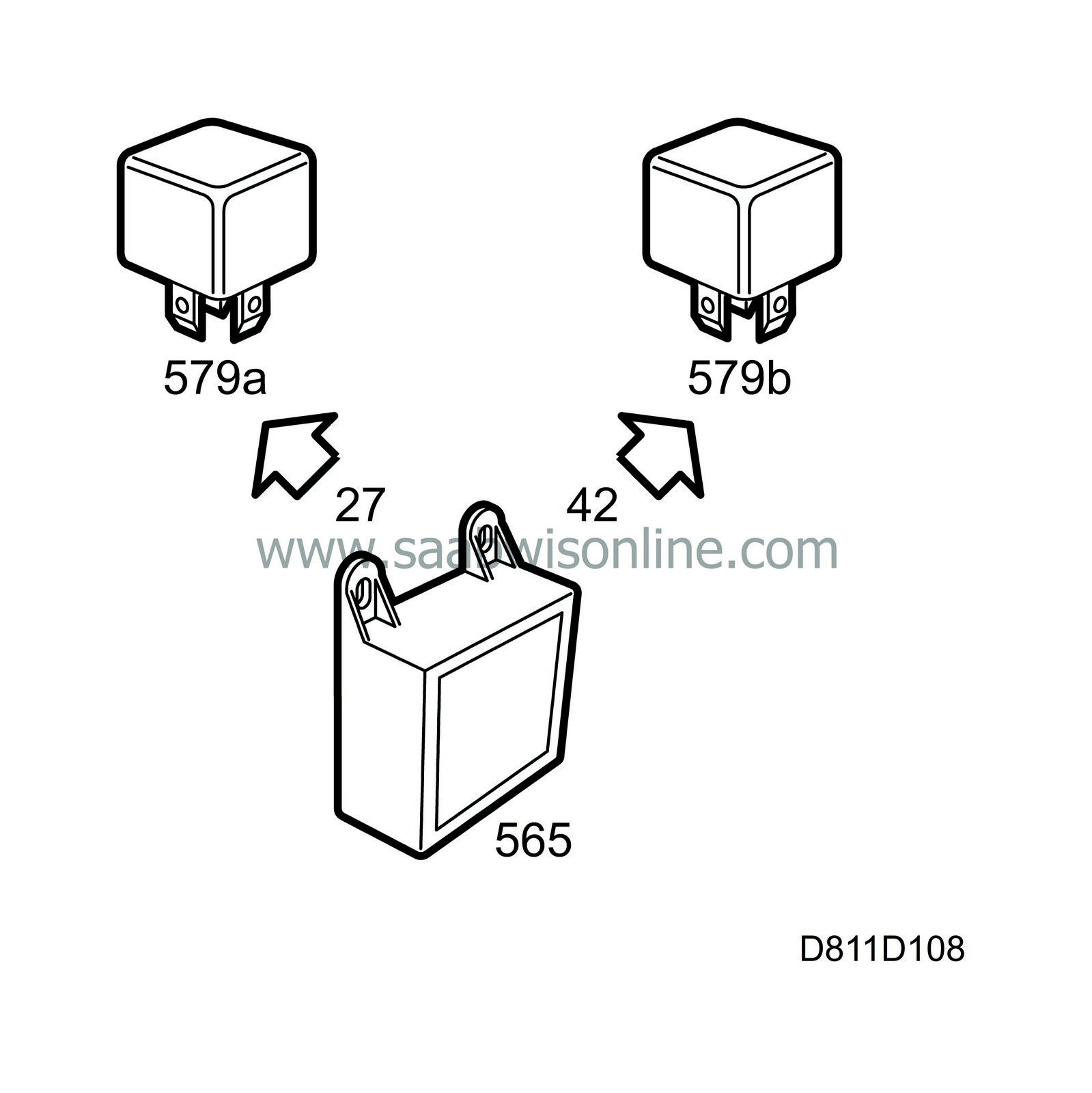Pump motor and relay
| Pump motor and relay |
The pump block and valve block are mounted on the hydraulic unit, located in the torsion box behind the rear seat. The pump is integrated in the pump block, the pump is powered by a DC motor and there is a relay bracket with two relays on the valve block, which are controlled by the STC control module and feed voltage to the pump motor.
The rotational direction of the pump motor is changed by reversing the polarity of the power supply to the two relays. The pump must be able to run in both directions, as the soft top cover cylinders are connected to the respective inlet and outlet of the pump. To be able to operate the hydraulic cylinders in both directions, the direction of rotation must be changed.
The two relays are supplied with power by a main relay in order to ensure that the power supply is disconnected to the pump motor when the ignition is turned off. The activating coil in the main relay is connected to +54 current, which means that the pump relays only receive power when the ignition is ON.
This means that if a malfunction occurs in the relay switches of a pump relay or a there is a wiring malfunction, the pump motor will always stop when the ignition is turned OFF.


Diagnostics
There are no diagnostics for the main relay. The symptom could be that the pump motor is inactive when operating the ROOF switch. The STC control module will generate a diagnostic trouble code for one of the switches or microswitches.To open the soft top cover, there must be pressure on the “pull side” of the oil pump. The STC control module then grounds pin 27, whereby the “pull” pump motor relay feeds the pump motor, which is grounded through the “push” pump motor relay.
To close the soft top cover, there must be pressure on the “push side” of the fluid pump. The STC control module then grounds pin 42, whereby the “push” pump motor relay feeds the pump motor, which is grounded through the “pull” pump motor relay.
The motor is provided with overheating protection to prevent overheating.


